HAZCOM Pictograms – GHS Symbols & Meaning [Updated 2023]
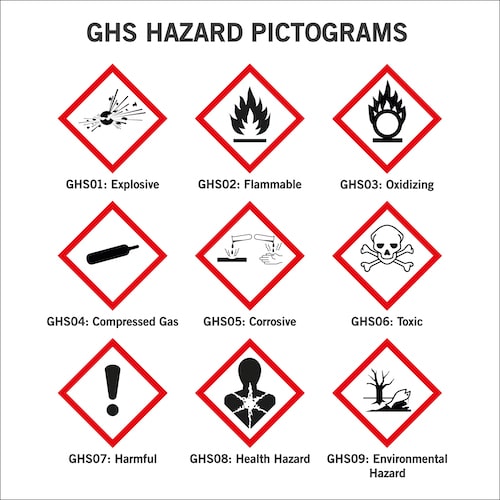
You may be familiar with warning signs on everyday products in the workplace, but do you know what those symbols mean? The red diamonds with pictograms in the center aren’t just for display, they communicate important information about the contents of the container that could spare you from coming into contact with contaminants and dangerous substances.
Here, we’ll discuss what the HAZCOM pictograms are, what they mean, and how they affect you in the workplace. Knowing what they are can keep you and your coworkers safe from harm and prevent dangerous situations from breaking out. They are also part of any broader Hazard Communication Training Program you have within your business. Pictograms, are an important part of what is covered by the HAZCOM Standard.
What are Hazard Communication Pictograms?

Also known as HAZCOM, this globally harmonized system sets the hazard communication standard. These widely recognized symbols are used to label toxic materials at a glance. The Occupational Safety and Health Administration (OSHA) requires that all potentially dangerous chemical hazards are labeled with HAZCOM pictograms.
They are simple images that convey the dangers of a substance and what an individual may be exposed to if said substance is spilled or leaks out of the container. Recognizing the symbols and their meanings can keep you and those around safe from harm in the event of an accidental spill or leak.
Chemical Hazards and Warnings in the Workplace
Every employer should provide comprehensive training for employees on the different mandatory and non-mandatory pictograms. Most workplaces utilize cleaning chemicals and require training for them. The labels on the bottles should be explained in mandatory OSHA training sessions meant to minimize the risk of exposure, and there should also be a reference guide available to all employees.
A working environment that makes use of hazardous materials should have these warnings on display for employees to look at when need be. When a health hazard is present, no matter how big or small, employees must be made aware of it.
What Do HAZCOM Pictograms Mean?
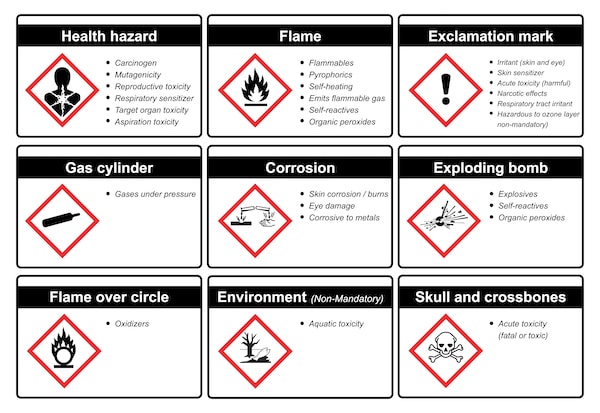
There are a total of nine hazard communication pictograms, eight of which OSHA requires to be enforced. They indicate the necessary precautions that must be taken when faced with exposure to hazardous chemicals and substances. It’s important to familiarize yourself with each one so that you can recognize their meanings easily.
Health Hazard
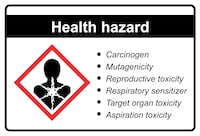
This image indicates that the chemicals are confirmed or suspected to be hazardous to one’s 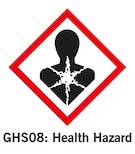
Coming into contact with toxic chemicals can have adverse effects on your skin and overall health. Keep an eye out for this hazard label to protect yourself and others from harmful consequences.
Flame
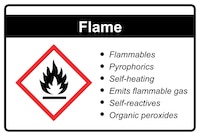
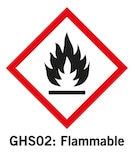
These substances and chemicals should be kept away from added heat and open flames, as misuse can result in a fire hazard breaking out. Make sure to double-check the labels before bringing these substances near a heat source.
Exclamation Mark
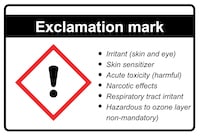
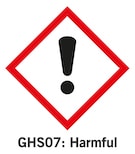
If inhaled or consumed orally, it can easily become a respiratory tract irritant and major health hazard. Use proper PPE around these products to keep yourself and your coworkers from harm. Your health should be your priority.
Gas Cylinder
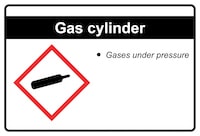
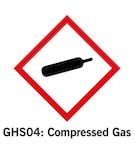
Hazard communication is essential to understanding the danger of being around chemical gases. Proper training programs can educate employees on how to handle hazards in their working environment.
Corrosion
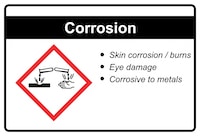
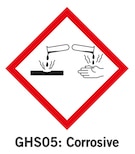
Powerful cleaning chemicals, such as drain cleaners can be labeled with this warning. These cleaners are acidic to help break down materials, greases, and minerals that build up over time. Utilizing proper personal protection equipment (PPE) will help protect your eyes and hands from coming into contact with the cleaner.
Exploding Bomb
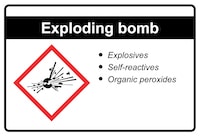
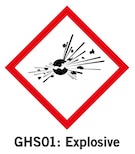
Improperly handling a substance with this warning may cause an explosion, resulting in severe injury or death for those in the immediate area. Different powders and gases are labeled with this warning for your safety, and proper training will help employees understand how to approach this hazard communication standard.
Flame Over Circle
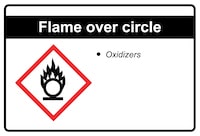
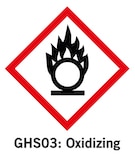
Keep products with this warning away from heat sources and rooms where temperatures rise. Doing so will reduce the chances that these products start a dangerous reaction that puts you and your coworkers in danger.
Skull and Cross Bones
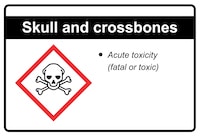
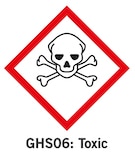
Some cleaning products come with this warning as well, as they should never be ingested or make contact with human tissue. Should either of these occur, follow emergency protocol to get help immediately. Never keep these products out in the open where untrained employees can accidentally expose themselves to acute toxicity.
Environment
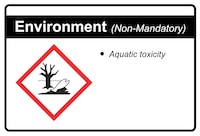
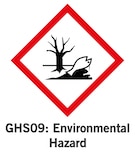
While OSHA doesn’t currently enforce the label, employers should still be aware of their environmental impact as future amendments may require these warning labels to be followed.
The Difference Between Physical Hazards and Health Hazards
Knowing what the HAZCOM warning labels mean allows you to act carefully around them, but there are different effects that these hazardous materials have. Some effects can be health hazards, while others are physical. Understanding the difference between them can help you better prepare yourself and your coworkers for the worst-case scenario while exercising caution.
Physical Hazards
Physical hazards are defined as substances that present dangers and cause damage to the human body. These effects manifest as damage to the epidermis, such as burns and corrosion. Additionally, classification for this type of hazard is only granted when there is scientific evidence to warrant it.
Health Hazards
Health hazards are defined as chemical substances that can be inhaled and cause damage to the eyes and lungs. Products that cause lasting eye irritation or damage to vision are categorized as potential health hazards. It’s important to follow safety protocol to avoid consuming these substances to prevent internal damage.
The Importance of Hazard Communication Pictograms
The creation of the HAZCOM warnings is meant to help workers identify dangerous materials in their working environment at a glance. Having a familiar, widely-recognized system of symbols and images makes it easier to communicate the message of danger. With proper training and employee safety plans in place, your working environment is set up for success.
That’s why it’s doubly important to not only recognize the HAZCOM warnings but understand what they mean. Different products must be handled in different ways to prevent disastrous consequences from arising and compromising the health and safety of your fellow employees.
Conclusion
Now that you understand what the HAZCOM pictograms are and what they mean, you can stay safe at work and educate your fellow employees on safe practices. Knowing which warnings are enforced by OSHA will also help you stay compliant with the industry standards and avoid hefty fines and legal trouble. Take care to use PPE around all hazardous materials at work to keep yourself safe.